Abstract
Girard, Kenneth F. (St. Margaret's Hospital, Boston, Mass.), Anthony J. Sbarra, and Wadi A. Bardawil. Serology of Listeria monocytogenes. I. Characteristics of the soluble hemolysin. J. Bacteriol. 85:349–355. 1963.—Our results clearly demonstrate that Listeria monocytogenes (strain 9-125) produces a soluble hemolysin. Such hemolysin is completely precipitated out of sterile culture filtrates by 60% saturation with ammonium sulfate at 5 C, and virtually all of the hemolytic activity resides in the so-called “euglobulin” fraction. The protein nature of this hemolysin is further indicated by its nondialyzable property, heat lability, susceptibility to proteolysis by trypsin, and antigenicity in the full sense. Paper electrophoresis indicates that the isolated active fraction migrates as a γ-type globulin. A procedure for determining Listeria antihemolysin levels in sera adapted from a method commonly employed for quantitating antistreptolysin O is described. The relative value of anti-Listeria hemolysin titration as a possible serological aid in diagnosis remains to be determined and is presently under investigation.
Full text
PDF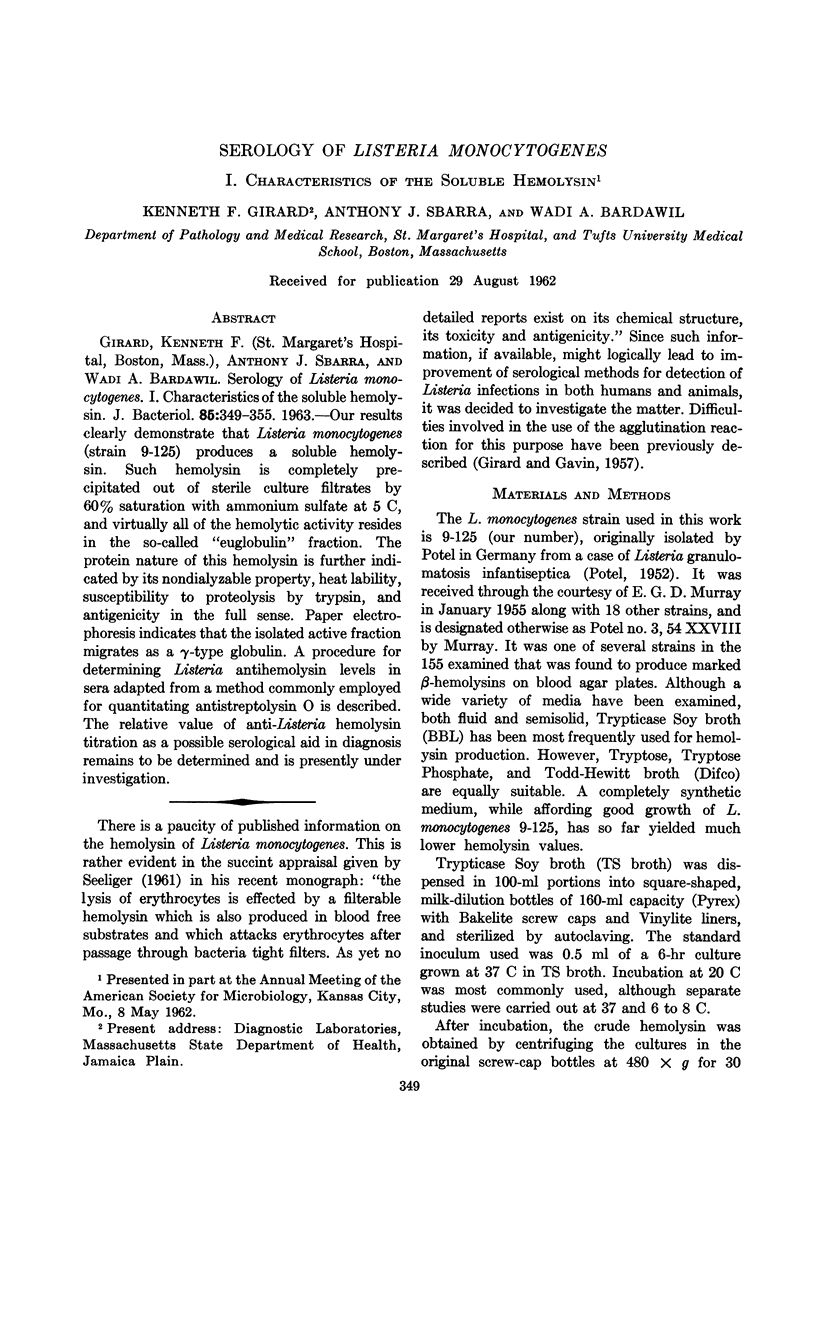
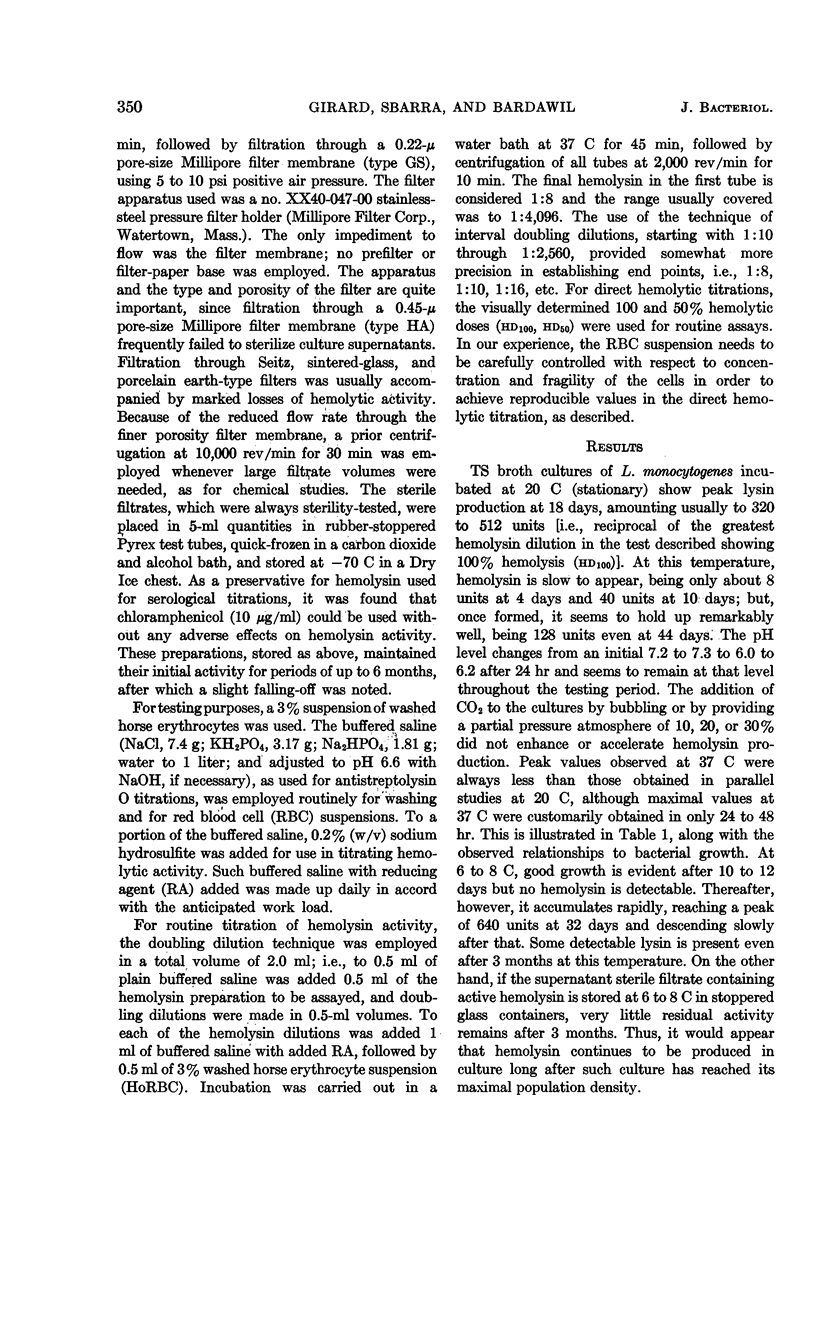
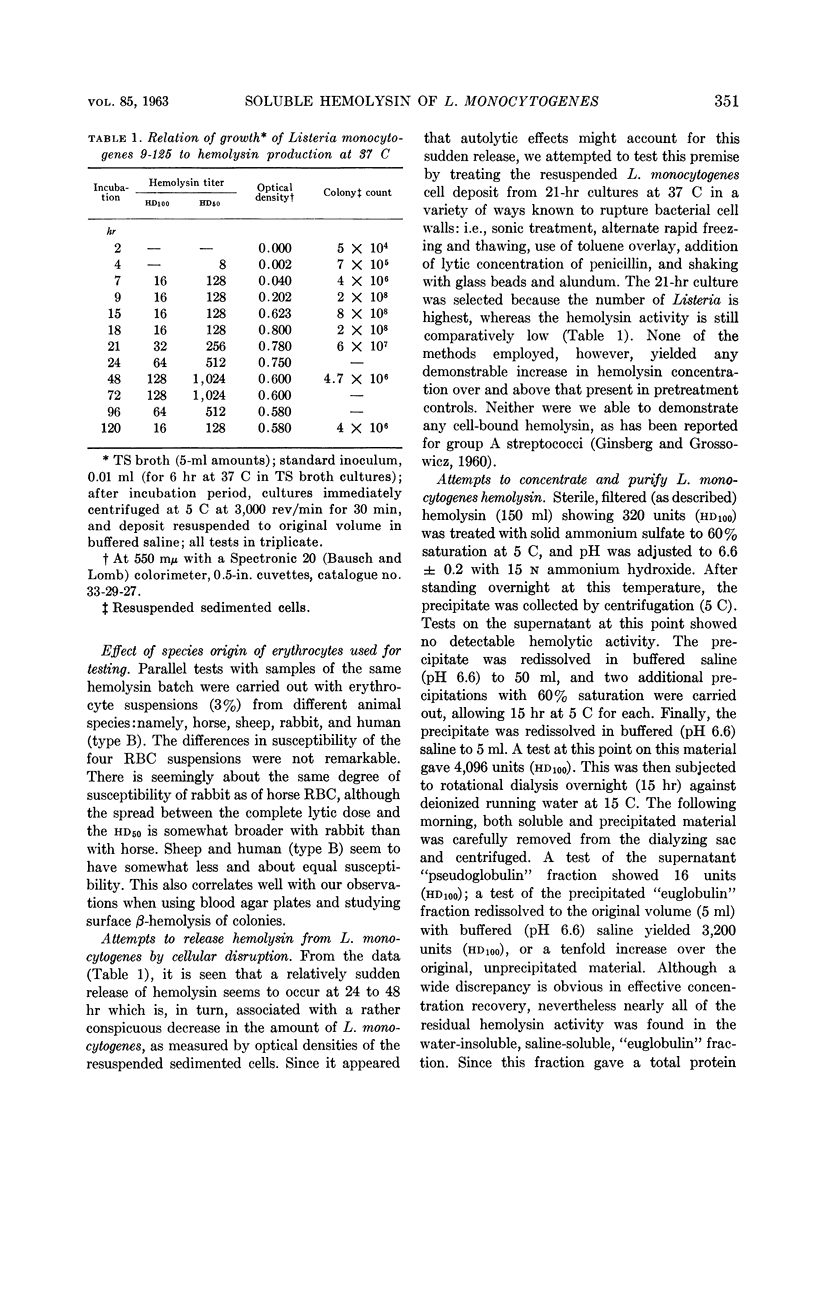
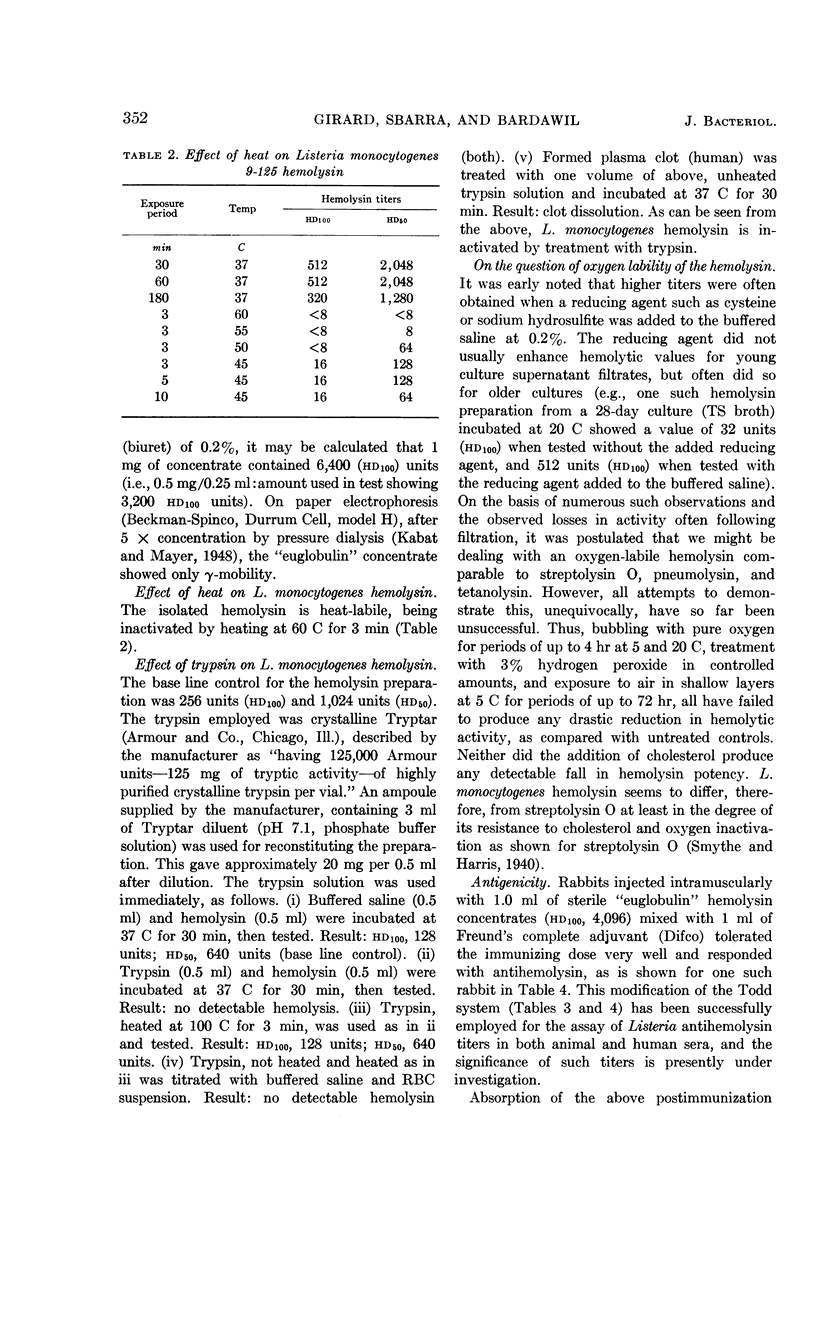
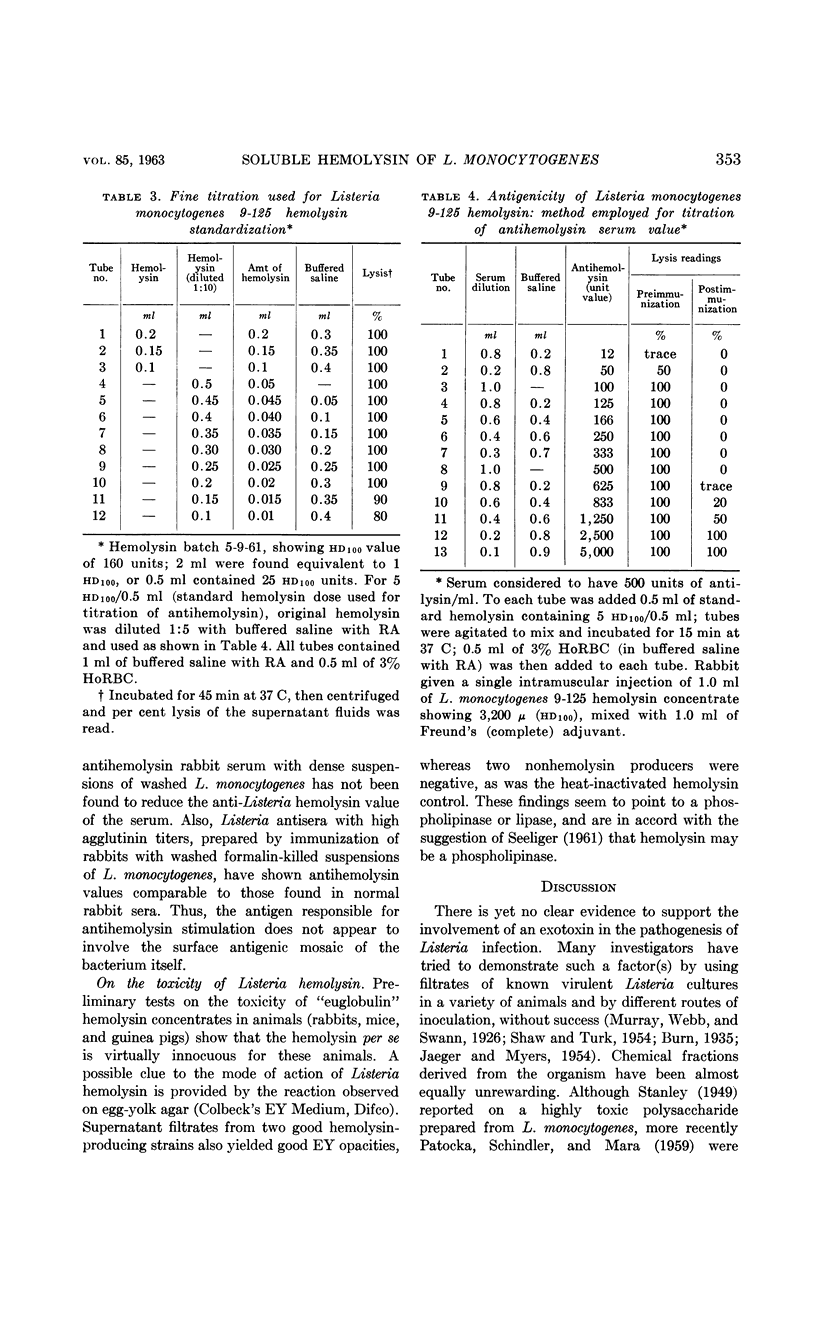
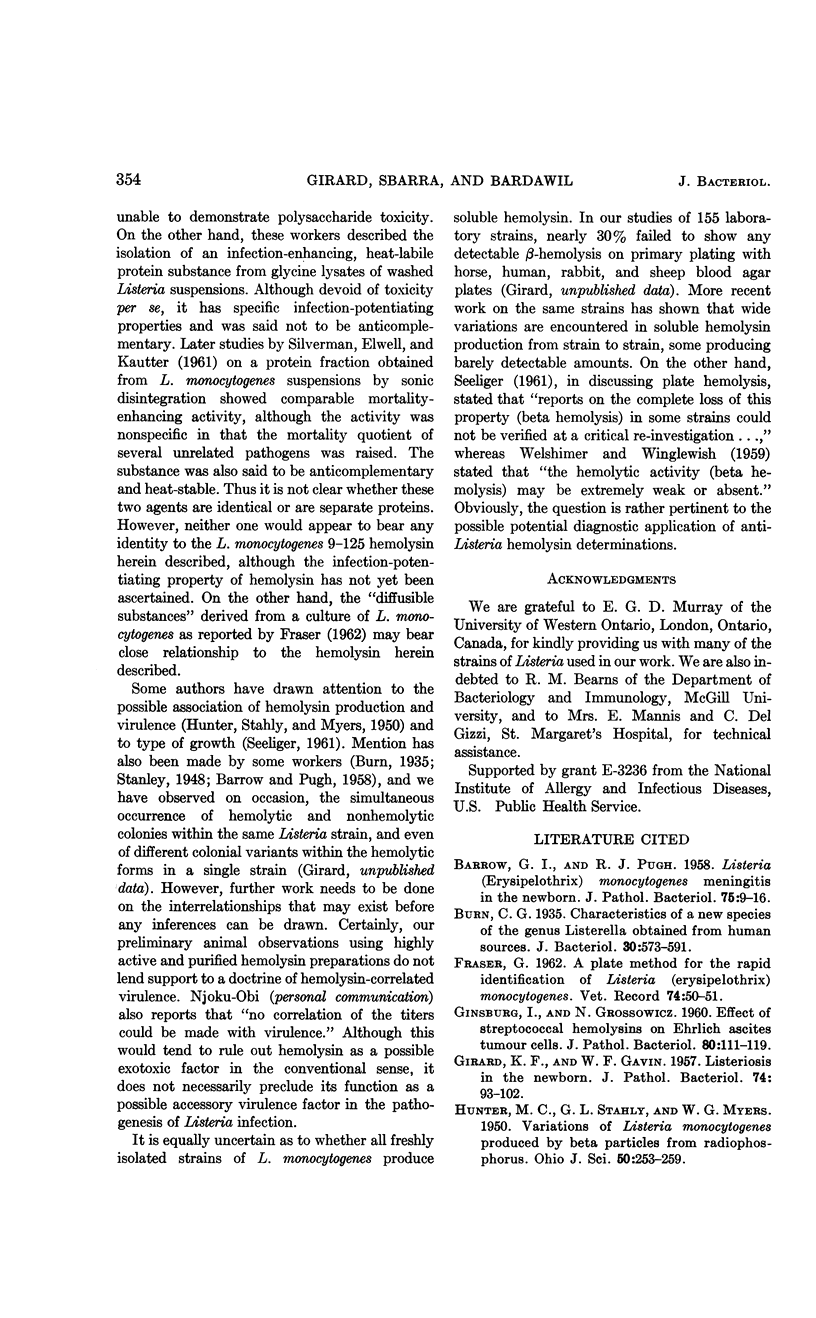
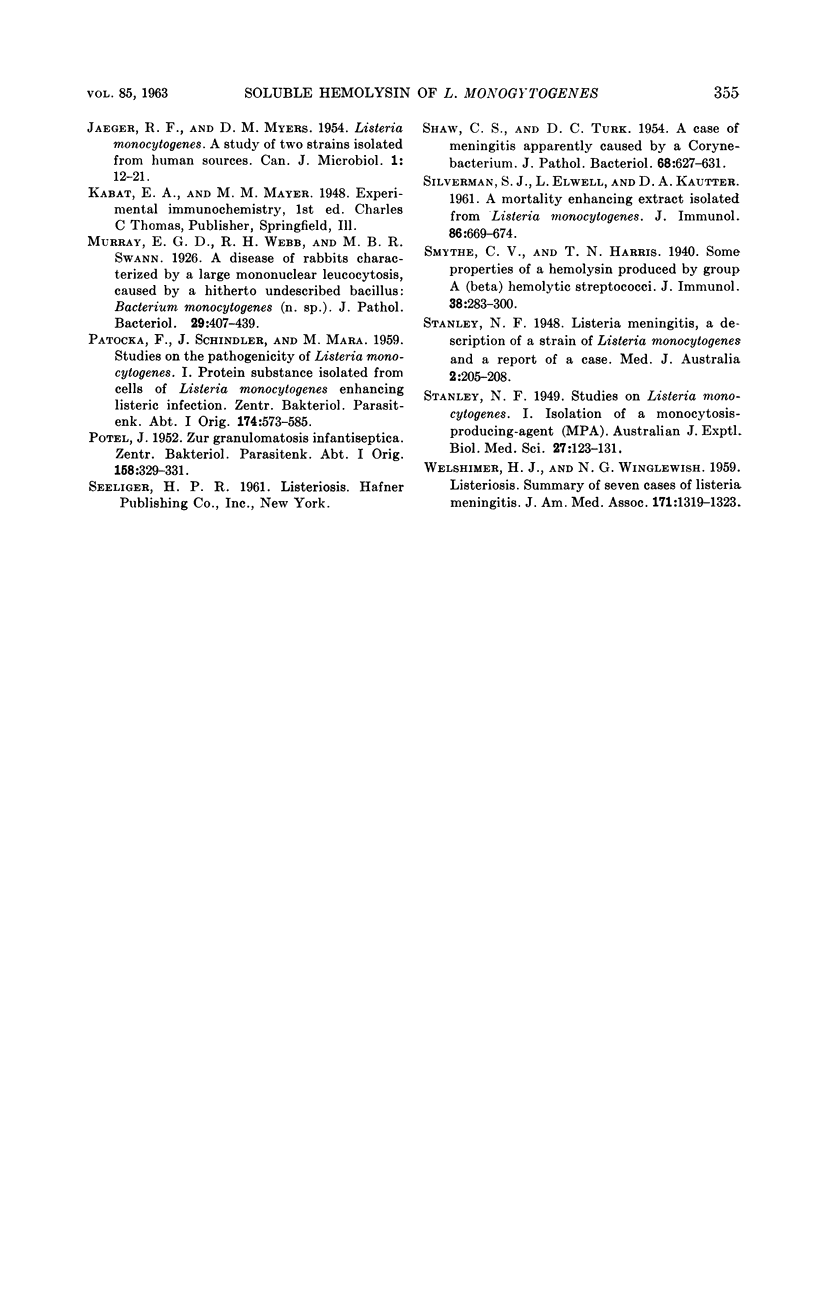
Selected References
These references are in PubMed. This may not be the complete list of references from this article.
- BARROW G. I., PUGH R. J. Listeria (Erysipelothrix) monocytogenes meningitis in the newborn. J Pathol Bacteriol. 1958 Jan;75(1):9–16. [PubMed] [Google Scholar]
- Burn C. G. Characteristics of a New Species of the Genus Listerella Obtained from Human Sources. J Bacteriol. 1935 Dec;30(6):573–591. doi: 10.1128/jb.30.6.573-591.1935. [DOI] [PMC free article] [PubMed] [Google Scholar]
- GINSBURG I., GROSSOWICZ N. Effect of streptococcal haemolysins on Ehrlich ascites tumour cells. J Pathol Bacteriol. 1960 Jul;80:111–119. [PubMed] [Google Scholar]
- JAEGER R. F., MYERS D. M. Listeria monocytogenes: a study of two strains isolated from human listeriosis. Can J Microbiol. 1954 Aug;1(1):12–21. doi: 10.1139/m55-003. [DOI] [PubMed] [Google Scholar]
- PATOCKA F., SCHINDLER J., MARA M. Studies on the pathogenicity of Listeria monocytogenes. I. Protein substance isolated from cells of Listeria monocytogenes enhancing listeric infection. Zentralbl Bakteriol Orig. 1959 Apr;174(7-8):573–585. [PubMed] [Google Scholar]
- POTEL J. Zur Granulomatosis infantiseptica. Zentralbl Bakteriol Parasitenkd Infektionskr Hyg. 1952 Jun;158(3-5):329–332. [PubMed] [Google Scholar]
- SHAW C. S., TURK D. C. A case of meningitis apparently caused by a Corynebacterium. J Pathol Bacteriol. 1954 Oct;68(2):627–631. doi: 10.1002/path.1700680236. [DOI] [PubMed] [Google Scholar]
- WELSHIMER H. J., WINGLEWISH N. G. Listeriosis-summary of seven cases of Listeria meningitis. J Am Med Assoc. 1959 Nov 7;171:1319–1323. doi: 10.1001/jama.1959.03010280043011. [DOI] [PubMed] [Google Scholar]


